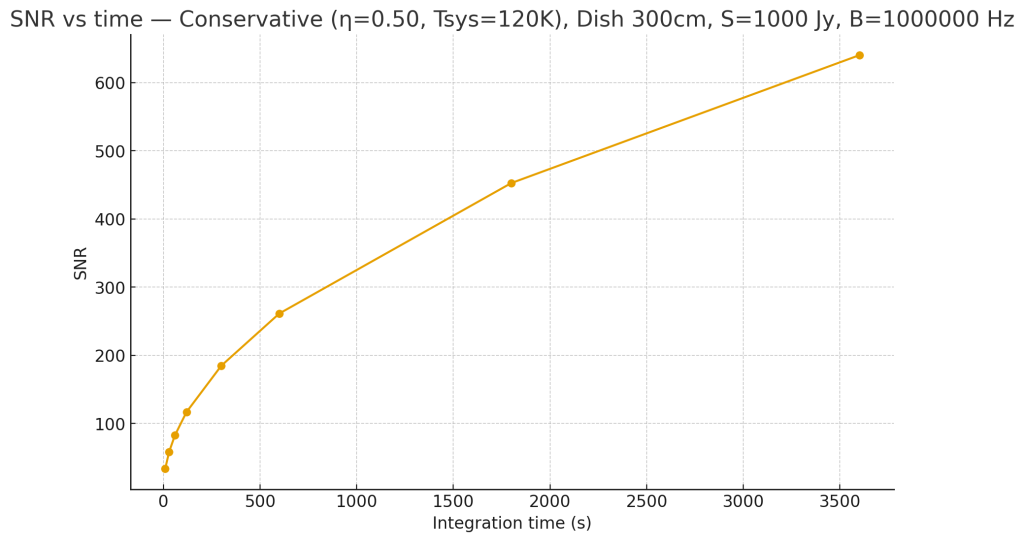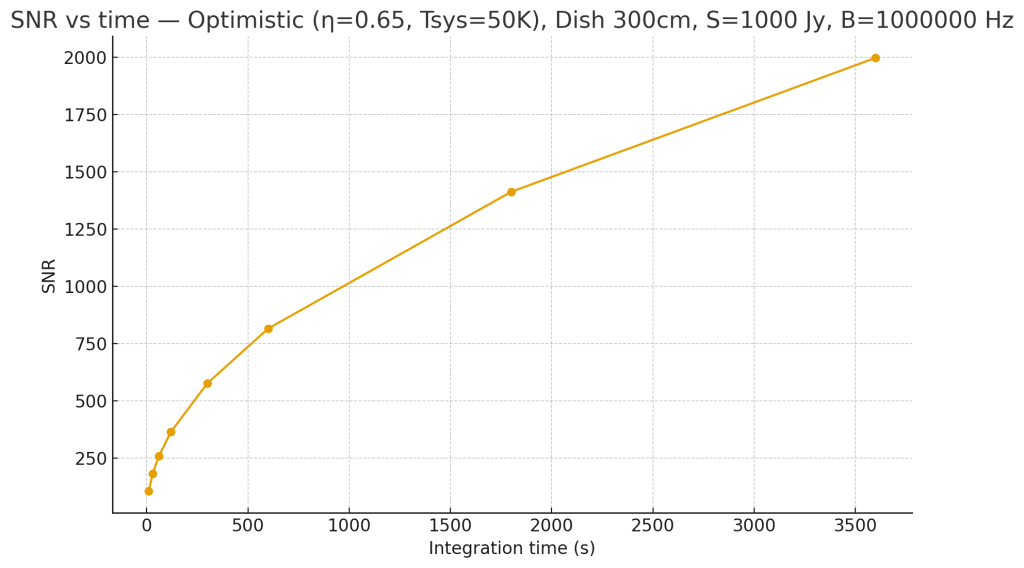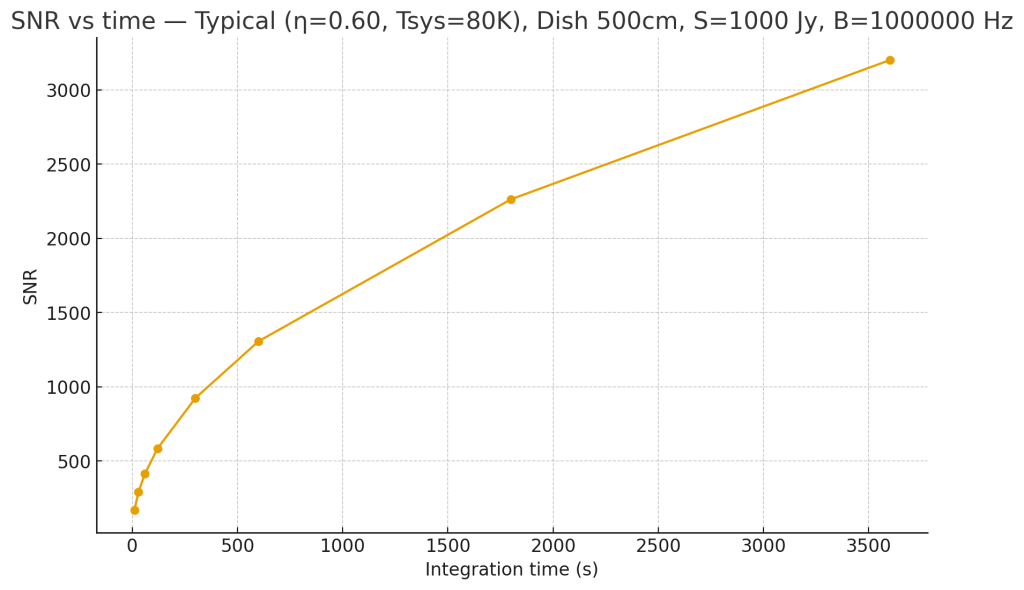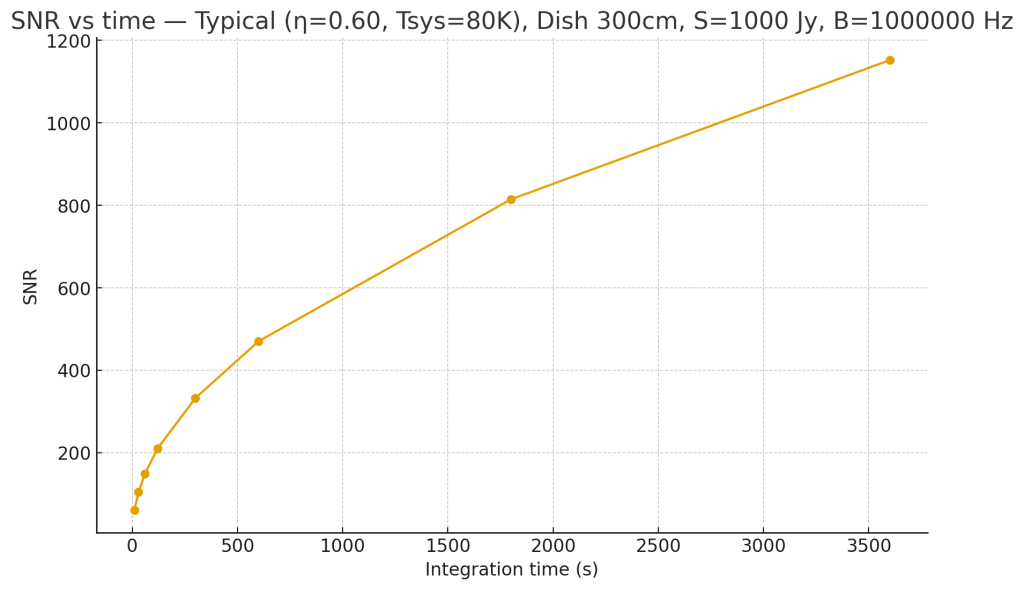Compare the performance of 80cm, 90cm, 100cm, 110cm, 110cm, 140cm, 150cm, 180cm, 240cm, 300cm, 500cm, 1000cm dishes for 1420MHz amateur radioastronomy
The attachments mentioned in the discussion below are available in following downloadable ZIP archive:
Here’s a practical comparison for your dish sizes at the HI line (1420 MHz), assuming a typical aperture efficiency η = 0.60 and system temperature Tsys = 80 K. I’ve computed:
- Gain (dBi)
- Beamwidth (HPBW) in degrees and arcminutes (≈ 70 λ/D)
- Effective collecting area Ae
- SEFD (in Jy), using SEFD ≈ 2kTsys / Ae
I’ve put the full table in an interactive sheet for you to scan, sort, and filter. You can also grab the raw CSV.
Notes on interpreting the numbers
- Wavelength at 1420 MHz: λ ≈ 0.211 m.
- Gain scales as D² and HPBW scales as λ/D, so doubling diameter gives ~4× gain and ~½ beamwidth.
- SEFD ∝ 1/Ae: bigger dishes → lower SEFD → better sensitivity (for the same Tsys).
- If your actual η or Tsys differ, scale accordingly:
- New Ae = Ae × (η_actual/0.60)
- New SEFD = SEFD × (Tsys_actual/80 K) × (0.60/η_actual)
Typical takeaways for your list
- 80–110 cm: Wide beams (HPBW ~8–6°). Great for all-sky mapping and continuum drift scans, limited point-source sensitivity.
- 140–180 cm: HPBW ~5–4°. Good for bright Galactic HI structure and solar/strong continuum.
- 240–300 cm: HPBW ~3–2.5°. Solid for Galactic HI spectra with decent velocity resolution and SNR.
- 500 cm (5 m): HPBW ~1.5°. Substantially better SEFD; discrete H I features and stronger continuum sources become practical in shorter integrations.
- 1000 cm (10 m): HPBW ~0.75°. Strong point-source capability and good spectral sensitivity with modest integration, assuming low RFI and stable calibration.
If you want, I can quickly re-run the table with your measured η (spillover + illumination) and Tsys from your current LNA/filters to get tighter SEFD estimates—or add integration time → expected SNR for typical targets (e.g., Cas A, Cyg A, Galactic plane H I lines) for your SDR/RSPduo setup.




FOLLOWING ABOVE POST, ALEX PETTIT SENT ME THIS INFORMATION AND DIAGRAMS:
Andrew,
I do not understand the “1 dB” reference :
0 dB = a 1 : 1.000 power ratio.
1 dB = a 1 : 1.259 power ratio.

12 m Radio Telescope @ Neu Golm Observatory, Germany

From processing data acquired by dishes up to 12.0 meters,
about +3 dB over cold sky is the max from a distributed source as Galactic H Clouds